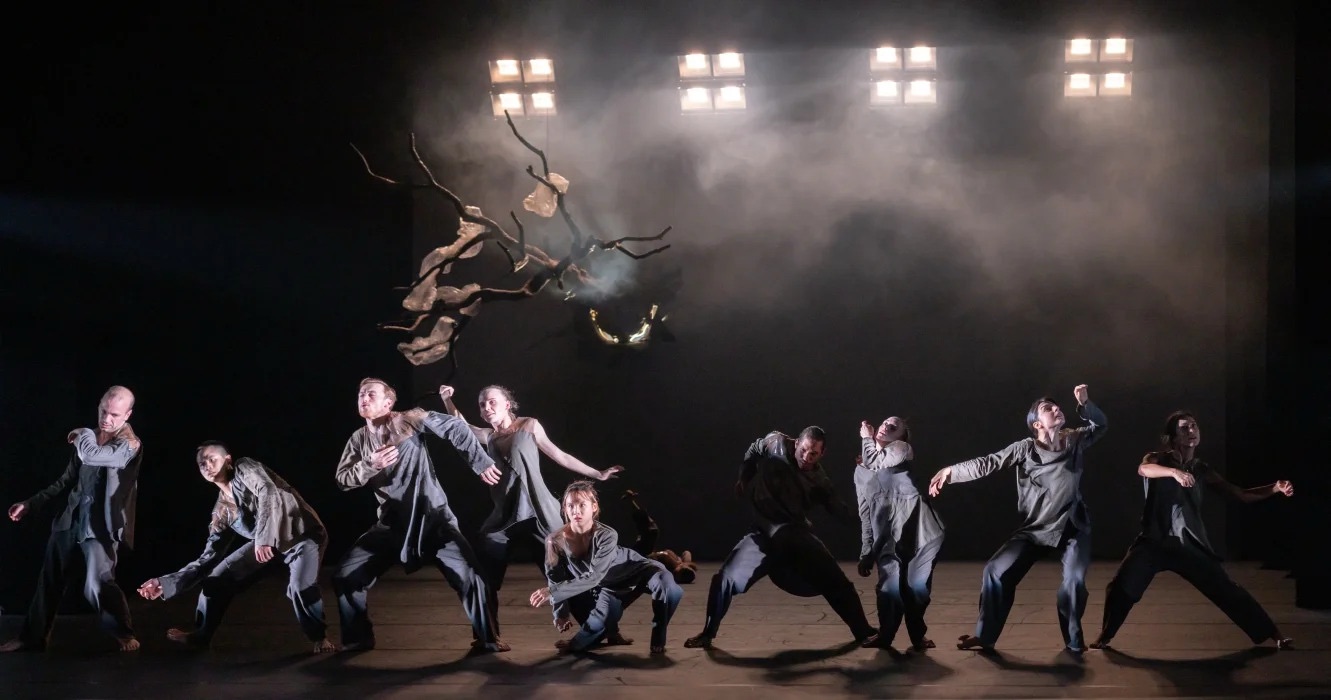Words by Giordana Patumi.
Beyond by Luzerner Theater’s resident dance company Tanz Luzern is a performance that provides a mixed experience, combining distinct works that explore themes of human potential, individual expression and the physicality of movement. Both pieces showcase impressive artistry, but their execution leaves room for varying degrees of engagement.
The first piece, “The Human Attributes,” choreographed by Swee Boon Kuik, draws inspiration from the ancient Chinese martial art of Tai Chi. It presents a slower, more meditative approach to dance, focusing on fluid movements and breath control. The piece is executed with finesse, but its repetitive nature can detract from the overall impact. While the subtlety of the choreography may appeal to some, others might find it lacking the dynamic energy that could elevate the work into something truly mesmerizing. The deliberate pace and soft flow of the movements are beautiful, but the piece doesn’t quite stir the soul in the way one might expect from a work of contemporary dance. Despite this, the precision and control demonstrated by the dancers, along with the peaceful atmosphere it creates, offer a calming and introspective experience for those willing to appreciate the finer details of the performance.
On the other hand, Andrea Miller‘s “SEREMOS” brings a distinct shift in energy and rhythm. It infuses the stage with more intensity and vigor, with dancers moving to a faster, more complex beat. This piece certainly has more momentum, yet it introduces an intriguing twist in one section, where duets, which seem inspired by neoclassical ballet, emerge almost abruptly. While technically impressive, these moments feel slightly out of place within the context of the rest of the performance. The classical influences clash with the otherwise modern tone of the piece, creating a sense of disconnection that disrupts the overall flow of the choreography. These duets, though performed with skill, seem to reflect a different aesthetic that doesn’t quite align with the contemporary movement vocabulary of “SEREMOS.”
However, there is a striking contrast in Grazia Scarpato‘s solo performance, which shines as the emotional centerpiece of the second piece. Her technical prowess and deep expressiveness capture the audience’s attention, making the solo an unforgettable highlight. Her movements are sharp and clear, yet fluid, drawing the viewer into her emotional journey as she moves through the piece.
While the ensemble’s contributions are commendable, the choreography in both pieces occasionally underutilises their collective potential, leaving room for a more integrated and dynamic group performance.
The evening, while not entirely groundbreaking, remains a pleasant experience for those who appreciate contemporary dance. The pacing, tone and range of movement offer something for everyone, though it may not resonate deeply with all viewers. The Luzerner Theater continues to be a prominent cultural institution, and it’s clear that the company has the potential to create more compelling and dynamic performances in the future. With the upcoming municipal elections for the renovation of the theater, one can only hope that this revitalization will bring fresh opportunities for artistic growth and innovation.
For those interested in the future of the Luzerner Theater and the role it plays in the local cultural scene, it’s worth noting the importance of voting in the upcoming elections. The future of the theater depends on the support of the community, and a renovation project could open new avenues for creativity and performance.
